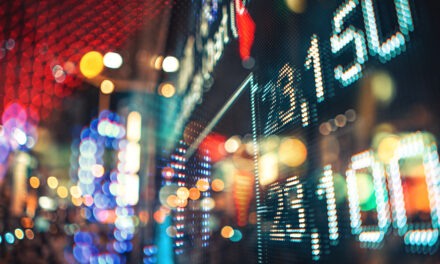Recent stock market action has plenty of people very worried.
The question is: Should YOU be?
Consider what’s happening today:
- The S&P 500 and the Dow have broken below their short-term moving averages for the first time since just before the November election.
- The VIX volatility index — the so-called fear gauge — has spiked 35% in the last five trading sessions.
- Only 13% of stocks on the NYSE are rising while 87% are declining. But the trading volume of the rising stocks is double that of the falling stocks. As my colleague, Clint Lee, put it, “that’s bat-**** crazy!”
- Stocks of some rapidly-declining old-economy companies have experienced bizarre price spikes due to coordinated market manipulation by social media-based retail investors. GameStop (NYSE: GME) is up nearly 8,000% over the last six months. AMC (NYSE: AMC) is up over 550% in the last month. Both experienced triple-digit price rises this morning.
- Negative headlines are beginning to accumulate — around COVID-19, vaccines and gridlock in the Senate. The general impression is that things are getting worse, but Washington remains unable or unwilling to do anything about it (all of which I talked about in the Bauman Letter Weekly update earlier).
Taken together, this sure seems like scary times.
But there is simply no way to know ahead of time whether we’re facing an impending collapse in the stock market. For that, you need a crystal ball.
To understand why, remember that every stock market crash — a 20% decline from the previous 52-week high — has one thing in common: the demand for stocks dries up.
It’s called a withdrawal of liquidity.
Sometimes that withdrawal has an easily identifiable cause. An antitrust lawsuit against Microsoft spooked investors in the dot-com crash of 2000. The collapse of Bear Stearns and Lehman Brothers precipitated the crash of late 2008.
The issues were so deep and systemic that investors all decided to flee to cash at once. And because the resulting collapse of stock prices gutted the balance sheets of investors overexposed to equities, they stayed out of the market for a long time.
Right now, there is no obvious reason why investors should do that. There’s no (known) pressure point in the financial system that would lead institutional investors to flee the market en masse and stay away.
Nevertheless, there’s no denying that the U.S. stock market is extremely frothy.
Why Investors Are Nervous
People are starting to make excuses for excessive valuations based on hopes for a high-tech future the same way they did in the run-up to the dot-com crash. They’re starting to argue that earnings don’t matter. A few analysts are even starting to make the bizarre case that companies should be valued based on how much money they spend rather than how much they earn.
In a context like this, many investors start to think of taking profits. They figure they’ll sneak into the market quickly, without anybody noticing, and sell a big chunk of a position to lock in their gains before it’s too late.
The problem is that inevitably, everyone does that at once. That leads to a correction, defined as a 10% drop from the previous 52 week high. Boom! You were too late.
But a correction only becomes a crash if big institutional investors are so deeply exposed to equities that the drop in prices threatens their solvency, in a vicious spiral.
Frankly, I don’t see that as a threat today.
The lessons learned in 2008 have been applied, and most of the U.S. financial system is reasonably exposed to the stock market … but not dangerously so. A few hedge funds have been hurt by the short squeeze on stocks like GameStop, but they’ve had no trouble raising cash to counter that.
So, I don’t believe a “crash” or “collapse” is on the cards. But a correction certainly is.
How to Protect Yourself
Now, there are two ways you can try to protect yourself against that.
- One is to get out ahead of it. That means doing what I have been advising you to do for months. That is to take profits regularly on your positions. It’s a way of taking some chips off the table so you will have some winnings set aside if worse comes to worst.
- The other way is to stay behind it. That means ignoring my advice to take regular profits, hoping someone has a crystal ball to predict the collapse before it happens (in which case, good luck and let me know if you find them).
The bottom line is that if you wait until it’s too late, you’ll have to keep on waiting until the market recovers. But if you get ahead of a correction, you’ll have the resources to buy the dip.
Some people claim to be geniuses because they sold right before a crash. Trust me, they just got lucky. The only sure way to protect yourself against a crash is to take profits on the way up.
As for holdings in our Bauman Letter model portfolio, we’ll stick with the plan. If anything changes, we’ll send you a trade alert. Keep an eye open for those.
For now, it’s too early to worry … and if you’ve been following my advice, there’s no need for worry now.
Kind Regards,

Ted Bauman
Editor, The Bauman Letter









